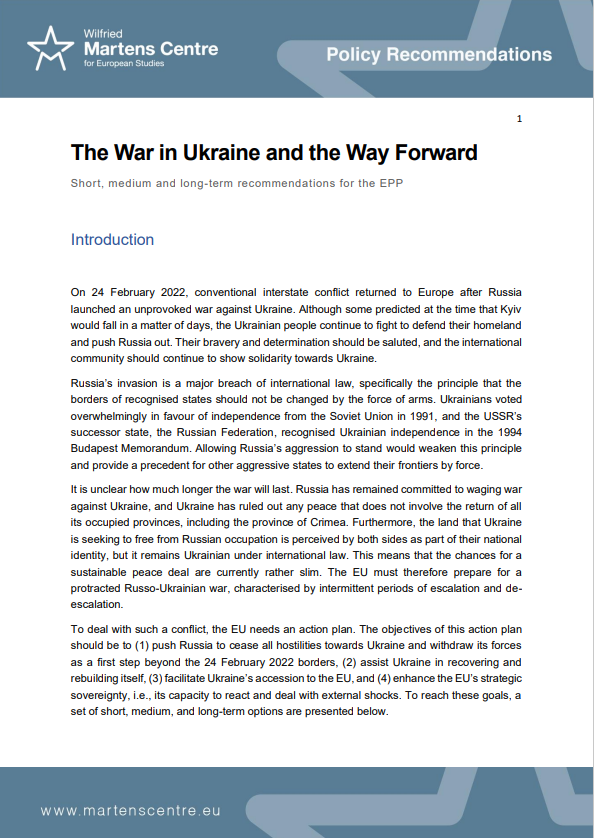The War in Ukraine and the Way Forward
28 March 2023
On 24 February 2022, conventional interstate conflict returned to Europe after Russia launched an unprovoked war against Ukraine. Although some predicted at the time that Kyiv would fall in a matter of days, the Ukrainian people continue to fight to defend their homeland and push Russia out. Their bravery and determination should be saluted, and the international community should continue to show solidarity towards Ukraine.
Russia’s invasion is a major breach of international law, specifically the principle that the borders of recognised states should not be changed by the force of arms. Ukrainians voted overwhelmingly in favour of independence from the Soviet Union in 1991, and the USSR’s successor state, the Russian Federation, recognised Ukrainian independence in the 1994 Budapest Memorandum. Allowing Russia’s aggression to stand would weaken this principle and provide a precedent for other aggressive states to extend their frontiers by force.
It is unclear how much longer the war will last. Russia has remained committed to waging war against Ukraine, and Ukraine has ruled out any peace that does not involve the return of all its occupied provinces, including the province of Crimea. Furthermore, the land that Ukraine is seeking to free from Russian occupation is perceived by both sides as part of their national identity, but it remains Ukrainian under international law. This means that the chances for a sustainable peace deal are currently rather slim. The EU must therefore prepare for a protracted Russo-Ukrainian war, characterised by intermittent periods of escalation and de-escalation.
To deal with such a conflict, the EU needs an action plan. The objectives of this action plan should be to (1) push Russia to cease all hostilities towards Ukraine and withdraw its forces as a first step beyond the 24 February 2022 borders, (2) assist Ukraine in recovering and rebuilding itself, (3) facilitate Ukraine’s accession to the EU, and (4) enhance the EU’s strategic sovereignty, i.e., its capacity to react and deal with external shocks. To reach these goals, a set of short, medium, and long-term options are presented below.
ENJOYING THIS CONTENT
